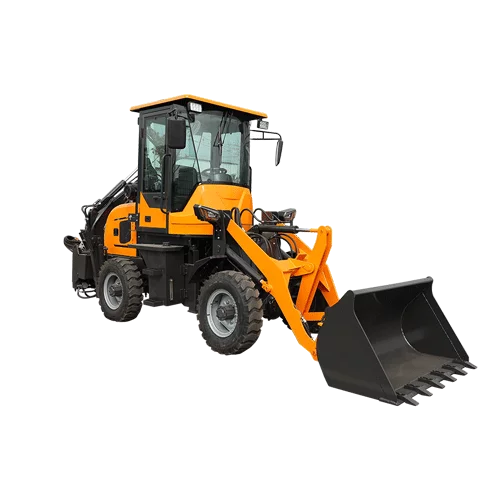Introduction

In the realm of modern construction, the backhoe loader stands as a versatile and indispensable machine. Combining the capabilities of a loader and an excavator, this equipment plays a pivotal role in various construction activities, from excavation and trenching to material handling and landscaping. This blog aims to delve deep into the functionalities, advantages, and considerations surrounding loaders in contemporary construction practices.
Key Features and Functionalities
Backhoe loaders are renowned for their multifunctionality, making them a preferred choice on construction sites worldwide. Here are some key features and functionalities that highlight their importance:
- Excavation and Trenching: Backhoe loaders excel in digging trenches and excavating soil efficiently. Equipped with a backhoe at the rear and a loader bucket in front, they can perform both tasks seamlessly, optimizing productivity on site.
- Material Handling: With their robust loader arms and versatile buckets, loaders are adept at handling various materials such as gravel, sand, and debris. This capability significantly streamlines construction operations, reducing manual labor and time.
- Versatility in Attachments: One of the key advantages of loaders is their compatibility with a range of attachments. These can include augers for drilling, hydraulic hammers for breaking concrete, and grapples for handling irregularly shaped materials. Such versatility enhances their utility across different construction tasks.
- Maneuverability: Backhoe loaders are designed for maneuverability in tight spaces, making them suitable for urban construction projects where space is limited. Their articulated steering and compact size enable operators to navigate around obstacles with ease.
Applications in Construction Projects
The application of backhoe loaders spans across various types of construction projects:
- Residential Construction: Backhoe loaders are frequently used in building foundations, digging trenches for utility lines, and landscaping residential properties.
- Commercial Construction: In larger-scale projects such as commercial buildings or infrastructure developments, these machines play critical roles in site preparation, material transport, and excavation.
- Road Construction: Backhoe loaders are instrumental in road maintenance and construction tasks, including trenching for utilities, backfilling, and loading materials onto trucks.
Advantages of Using Backhoe Loaders
The use of backhoe loaders offers several advantages that contribute to their widespread adoption in the construction industry:
- Cost Efficiency: By combining the functionalities of an excavator and a loader in a single machine, loaders can reduce equipment costs and operational expenses on construction sites.
- Time Savings: Their ability to perform multiple tasks without requiring equipment changeovers enhances operational efficiency and accelerates project timelines.
- Accessibility: Backhoe loaders are accessible to operators with varying skill levels, thanks to user-friendly controls and intuitive operation.
Case Studies and Real-World Examples

To illustrate the practical applications and benefits of backhoe loaders, let’s examine a few case studies:
| Project Name | Description | Backhoe Loader Usage |
|---|---|---|
| Urban Redevelopment | Excavation of building foundations and trenches | Model X equipped with hydraulic hammer for demo |
| Highway Construction | Clearing debris and loading materials | Model Y with extended reach arm for overhang tasks |
| Residential Landscaping | Land clearing and earthmoving | Model Z using auger attachment for fence post holes |
Conclusion
In conclusion, the backhoe loader stands as an indispensable asset in modern construction due to its versatility, efficiency, and cost-effectiveness. From small-scale residential projects to large-scale infrastructure developments, these machines play pivotal roles in enhancing productivity and meeting project deadlines. Understanding their functionalities and advantages can empower construction professionals to make informed decisions when selecting equipment for their projects.
FAQ
Q:What is the difference between a backhoe loader and an excavator?
A:A backhoe loader combines the functions of a loader (front) and an excavator (rear-mounted boom and bucket). An excavator is designed primarily for digging and lifting heavy materials with a hydraulic arm and bucket.
Q:How do you operate a loader?
A:Operating a loader requires training and familiarity with its controls. Typically, the loader’s front bucket and the backhoe arm are operated using hydraulic controls inside the cab.
Q:What are the maintenance requirements for a backhoe loader?
A:Regular maintenance includes checking fluid levels, inspecting hydraulic hoses, and greasing moving parts. Scheduled servicing ensures optimal performance and longevity of the machine.

